Havanese were developed as a breed in Cuba and come from the Bichon family. The ancestors of the Havanese came from the Mediterranean, and there are several theories about how this occurred. The most popular theory, and the one believed by Cubans themselves, is that first Havanese were brought to Cuba’s shores by commercial ship's captains who raised them on board their ships or perhaps exchanged them with other traders.
History of the Havanese
Famous Havanese
Many famous people from the past owned Havanese. These include:
-
Queen Victoria, who owned two.
-
Charles Dickens had 1, playmate of his seven children and named Tim.
-
King Henry III, Napoleon III, Francis I all owned Havanese dogs.
Current famous Havanese dogs and their owners include:
-
Venus Williams owns Harold Reginald Williams.
-
Donald Trump Jr.’s family owns two Havanese dogs.
-
Celebrity couple Seal and Heidi Klum own a Havanese.
-
TV personality Robert Verdi is another famous owner.
-
Barbara Walters owned Havanese and helped the popularity of the breed in the U.S. In 2006, she claimed her Havanese ‘Cha-Cha’ talks to her.
Personality
The Havanese is a gentle and affectionate breed that thrives on human companionship. They are fun loving, joyous and intelligent as well, and will enjoy making you laugh with goofy antics, or simply sitting on your lap watching the world go by. The Havanese is naturally drawn to children and will often play endlessly with them.
Because they are social, companionable dogs, they do best in an environment where they have company and are allowed to be part of the family. If their family is away during the day at work or school, they will need another dog to keep them company.
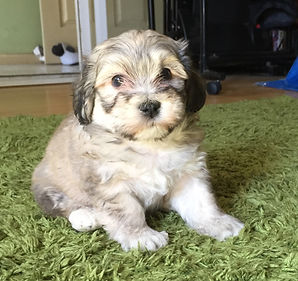
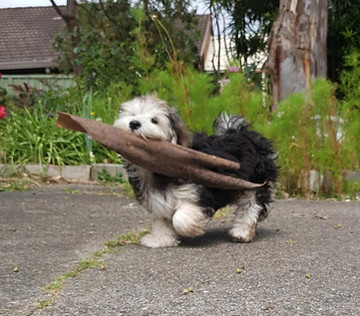



Temperament
Havanese are natural companion dogs: gentle and responsive. They become very attached to their human families and are excellent with children. Very affectionate and playful, with a high degree of intelligence, makes them very easy to train. These cheerful little dogs are very sociable and will get along with everyone including people, dogs, cats and children.
The breed suits just about every family. They are non-shedding, intelligent, love children and are happy to go at your pace. A moderate amount of daily exercise is needed, however they will self-exercise in the yard if you miss a day of walking. The coat is low maintenance if you keep it short, however it will still need some weekly grooming.
Living Conditions
Havanese do well in an apartment. They are very active indoors and can cope without a yard. Havanese are born to live in your home, with you and not in a patio or a kennel. However, at the same time, they do love to spend time outside and can often be found sunbaking on a warm day.
Grooming
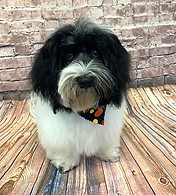
Havanese have a low shedding coat, and just like human hair it needs to be regularly brushed and washed. Havanese that are not being shown in conformation shows can be kept in a pet clip. This shorter coat will only require brushing once or twice a week, and washing every few weeks or whenever needed. A visit to the groomers every four to six months for a ‘trim’ will keep the Havanese coat short enough to be easily maintained.
If you want to keep your Havanese in a full coat, daily brushing and weekly bathing is usually required. If your pet Havanese has a very thick coat, it can be thinned to make grooming easier while maintaining the long coated look.
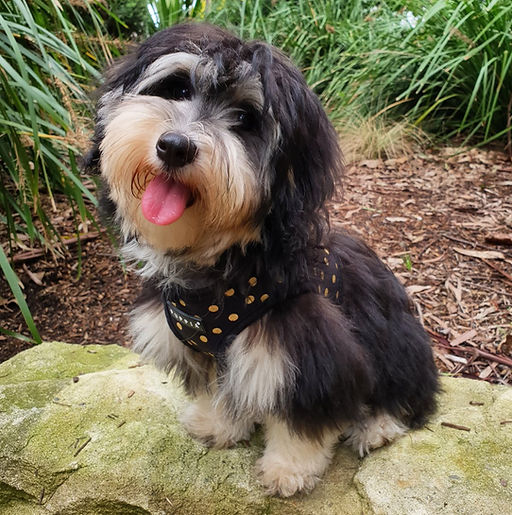
Important Details

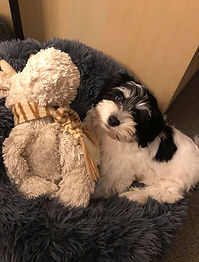
Life expectancy is around 14 -15 years. They are generally a healthy little dog.
Weight 4-11 kilos Height 20 – 28cms.
Colours: black, cream, chocolate, gold, tan & all combinations of these.
Coat: If allowed to grow a Havanese will end up with a long luxurious coat. The coat is naturally wavy which lends itself to cording (similar to dreadlocks). Although the Havanese is a non-shedding breed their coat still requires a lot of work if you wish it to remain long. Most people simply opt to clip the coat to a couple inches all around.

An article from the US regarding Havanese and vaccination. Leptospirosis is a C7, and Havanese can only safety take a C3. So please listen to your breeder and fight for the rights of your dog.
Diffuser Poisoning
If you have a diffuser in your home please do not run it with your Havanese in the room. They are very sensitive to different smells and can become quite sick.
Here is a list of essential oils not to use in your diffuser:
Anise (Pimpinella anisum)
Birch (Betula)
Bitter Almond (Prunus dulcis)
Boldo (Peumus boldus)
Calamus (Acorus calamus)
Camphor (Cinnamomum camphora)
Cassia (Cassia fistula)
Chenopodium (Chenopodium album)
Cloves (Syzygium aromaticum)
Garlic (Allium sativum)
Goosefoot (Chenopodium murale)
Horseradish (Armoracia rusticana)
Hyssop (Hyssopus sp. with the exception of Decumbens)
Juniper (Juniperus sp. with the exception of Juniper Berry)
Mugwort (Artemisia vulgaris)
Mustard (Brassica juncea)
Oregano (Origanum vulgare)
Pennyroyal (Mentha pulegium)
Red or White Thyme
Rue (Ruta graveolens)
Santolina (Santolina chamaecyparissus)
Sassafras (Sassafras albidum)
Savory (Satureja)
Tansy (Tanacetum vulgare)
Tea Tree Oil (Melaleuca alternifolia)
Terebinth (Pistacia palaestina)
Thuja (Thuja occidentalis)
Wintergreen (Gaultheria procumbens)
Wormwood (Artemisia absinthium)
Yarrow (Achillea millefolium)
If your dog is acting strangely, not eating or drinking, please take them straight to the vets.


